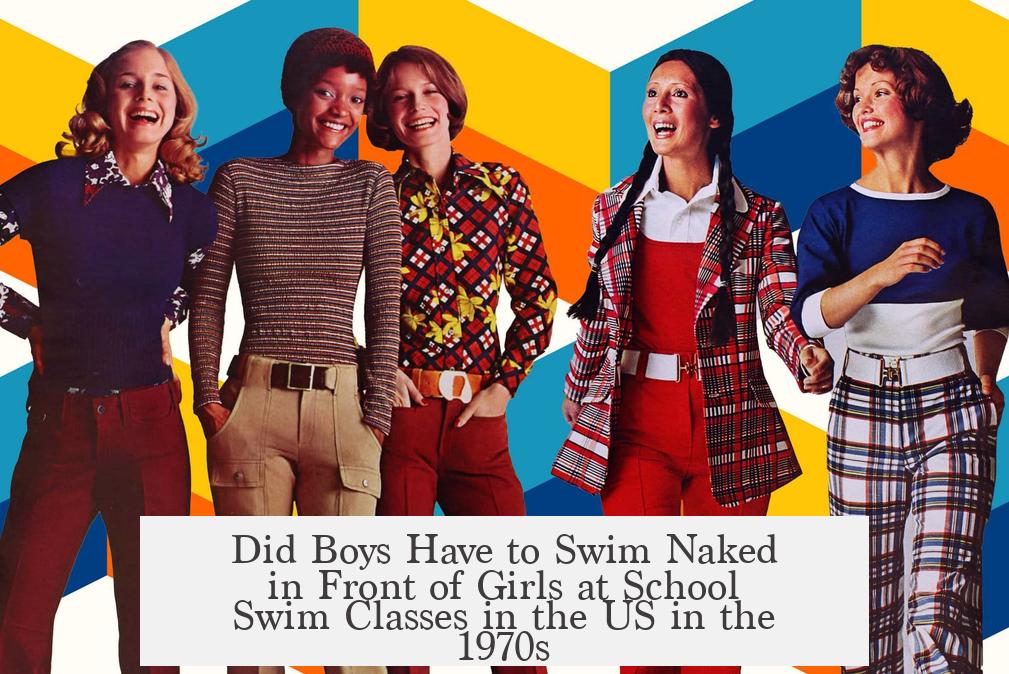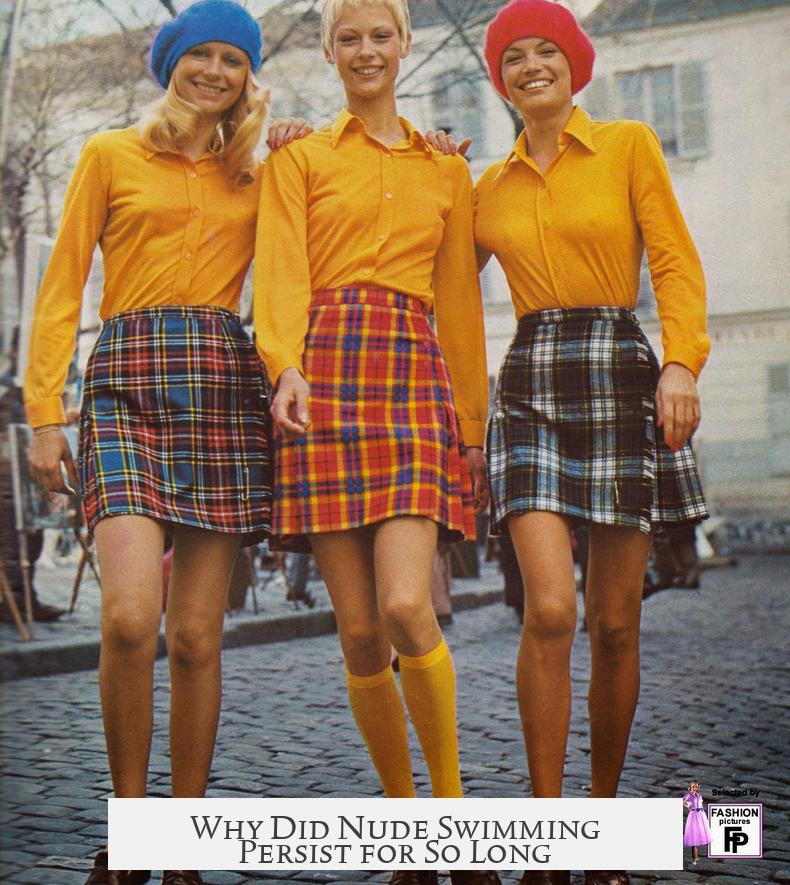Boys did not have to swim naked in front of girls during school swim classes in the US in the 1970s. Although nude swimming for males was practiced and enforced for sanitary reasons in earlier decades, this custom applied mainly to all-male settings. Mixed-gender nude swimming at schools was not a documented practice.
In the early to mid-20th century, organizations like the YMCA strongly promoted nude swimming for men. This was rooted in public health goals focusing on preventing disease transmission through swimming pools. Such measures included mandatory showering and inspection before use, excluding anyone with contagious conditions.
Sanitary rules often forbade bathing suits because they were harder to clean properly and could carry contaminants. Nude swimming helped pool operators visually inspect swimmers for skin infections and other health concerns easily. This practice improved overall hygiene and reduced pollution in shared aquatic facilities.
- The YMCA’s all-male pools routinely required nude bathing up to the 1970s.
- Men-only spaces like gym showers and pools normalized male nudity culturally during this era.
- Regulations varied by facility and region but often prioritized hygiene over privacy.
However, these policies did not extend to mixed-gender situations. Available historical records and memoirs reveal nude swimming mainly took place in single-sex environments. Co-educational classes and public pools typically required appropriate swimwear for all participants by the 1970s.
Notably, no direct evidence exists indicating boys swam naked in front of girls during school swim lessons. Given cultural norms around modesty and privacy when both sexes were present, schools avoided co-ed nude swimming practices. Facilities offering swim classes for both boys and girls enforced swimwear regulations clearly.
| Aspect | Details |
|---|---|
| Period of Nude Male Swimming | Early 1900s through 1970s, especially in YMCA and similar venues |
| Reason for Practice | Sanitation, disease control, easier disease inspection |
| Locations | Men-only pools, gym showers, segregated facilities |
| Mixed-Gender Settings | No documented nude swimming; swimwear required |
| School Swim Classes in 1970s | Nude swimming not practiced where boys and girls swam together |
The practice reflected early public health ideas linking morality and hygiene. Governments and community organizations sought to minimize contagion risks with strict regulations on bathing attire. These rules often mandated cleansing in the nude to ensure compliance.
Despite the cultural acceptance of male nude swimming at the time within male-only spaces, evolving social norms and sensitivities increasingly limited such practices, especially around mixed-gender interactions. By the 1970s, schools generally adopted swimwear policies reflecting broader expectations of privacy and modesty.
Parents and educators typically ensured swim classes respected boundaries between sexes. Separate swimming sessions or distinct areas for boys and girls reduced the chance of cross-gender nudity. Public swimming pools followed suit, requiring appropriate suits to promote comfort for all patrons.
The absence of direct evidence pointing to nude co-ed swimming during school classes suggests it was not an accepted norm. Anecdotal accounts from the period highlight nude practices predominantly in male-only YMCA pools or single-sex locker rooms rather than mixed school environments.
- Nude swimming for boys was common in single-sex venues until the 1970s.
- It aimed to improve public health through better hygiene controls in pools.
- Mixed-gender nude swimming at schools was not documented or customary.
- Schools required swimwear in co-ed swim classes to maintain modesty.
- The shift away from nude swimming coincided with evolving cultural norms on privacy.
Did Boys Have to Swim Naked in Front of Girls at School Swim Classes in the US in the 1970s?

The quick answer: no, boys did not have to swim naked in front of girls during mixed-gender school swim classes in the 1970s. While nude swimming policies certainly existed in US pools and schools earlier in the 20th century, these applied mainly to single-sex settings. The idea of co-ed nude swim classes with boys swimming naked in front of girls is more myth than reality.
This question sparks curiosity because the practice of nude swimming—especially among boys—was more common in the past, tied closely to public health rules and cultural norms. But let’s unpack why the nude swimming story is more nuanced than it sounds.
The Roots: Public Health and Swimming Pool Hygiene
In the late 19th and early 20th centuries, sanitation was a big deal. Germ theory was new and exciting. People suddenly realized that dirt, germs, and diseases could be stopped with soap, clean water, and regulations.
“At the end of the nineteenth century, it was even possible to sterilize wounds and surfaces with carbolic soap/acid.”
Public health became a top priority for governments and organizations. They weren’t just worried about disease spread but also moral behavior. Sometimes those two concerns weirdly overlapped when it came to what people wore (or didn’t) at public pools.
YMCA and Nude Bathing: The Early 20th Century Standards
The YMCA led the charge. This organization wasn’t just about Christian fellowship; it doubled as a public health advocate. Pools managed under YMCA rules often required nude bathing.
| Year | Policy Highlight |
|---|---|
| 1917 (Toronto YMCA) | Bathing suits prohibited for sanitary and hygienic reasons. |
| 1918 (Boston Society of Civil Engineers Journal) | Recommends nude bathing to identify diseased individuals and prevent pollution. |
The logic was: if you’re naked, the pool staff can easily spot skin infections or other health problems. Bathing suits could hide those issues and potentially spread germs.
Additionally, showers were mandatory before swimming—not just a quick rinse but often in the nude—and wearing personal bathing suits was sometimes forbidden because cleaning and sterilization mattered.
Who Swam Nude? Mostly Male-Only Settings

One key fact to remember: These nude swimming policies overwhelmingly applied to single-sex settings, meaning men swam nude with men, women with women.
In those days, cultural norms were different. Male nudity in male-only spaces like YMCA pools or gym showers was considered normal and practical. The rules simply formalized a practice that many accepted socially.
It’s important to stress that co-ed nude swimming wasn’t normal—or generally allowed. Nudity could provoke controversy and, well, social awkwardness if mixed gender.
“The YMCA did keep this regulation until the 1970s,” notes historian D. Michael Quinn. This, along with memoirs from that era, confirms nude swimming existed but mostly in male-only environments.
By the 1970s: The Shift Begins
School swim classes reflect this transition. While nude swimming persisted in some male-only YMCA pools and facilities well into the 1970s, combined-gender swim classes typically did not require—or allow—boys to swim naked in front of girls.
Co-ed classes became more common in this era, and with the rise of more modern pool hygiene standards and social norms, wearing swimsuits became the norm everywhere.
The “boys swimming naked in front of girls” narrative tends to crop up from experiences in segregated spaces (like locker room showers or all-boys classes) and gets blurred over time.
What Was the Actual Practice in Schools?
- **Boys swam nude in male-only swim classes** or YMCA facilities where old policies lingered.
- **Girls did the same in female-only swim classes**, sometimes also required to bathe nude before entering the pool.
- **In co-ed swim classes, boys wore swimsuits** to respect privacy and changing social standards.
So, if your grandma—or even you!—heard rumors about boys swimming naked during mixed-gender swim classes, it’s probably a case of crossed wires or exaggerations from older nude swimming practices in sex-segregated settings.
Why Did Nude Swimming Persist for So Long?

The persistence of nude swimming was largely about germs and public health. Before modern pool filters, chlorine levels, and swimwear technology, pools risked contamination.
Requiring nude bathing allowed easier alerts for skin infections and other health issues. It cut down on dirty swimwear compromising pool cleanliness. Plus, hospital-grade sterilization techniques just weren’t available everywhere.
Could You Imagine the Scene in a 1970s Gym?
Picture a boys-only class at the YMCA with naked swimmers prepping. It’s less scandalous, more practical. Guys of all ages ready to dive in—with hygiene and communal bathing culture intertwined.
Then imagine mixed-gender classes: the rules changed. Swim trunks became the norm, locker room privacy was respected, and old policies faded. The risk of teasing and the evolution of social norms meant boys never swam naked around girls in school pools.
Lessons from History & What It Means Today
This history shows how public health concerns shaped social norms around nudity. Sometimes, sanitary rules forced the hands of culture. Other times, social comfort pushed policies away from nude swimming.
It’s a fascinating example of how health, hygiene, and morals have been entangled over decades. The 1970s sit at the crossroads—old policies fading, new values rising.
**For those wondering whether to freak out about 1970s co-ed swim classes:** don’t. No confirmed reports of naked boys swimming in front of girls exist. Instead, this myth lets us explore how social, cultural, and health factors shaped swimming practices.
Final Takeaway
Did boys swim naked at school in front of girls? No. While nude swimming was common for boys in single-sex environments due to hygiene rules, such practices didn’t extend to mixed-gender swim classes in the US in the 1970s. The public health focus that gave rise to nudity in pools drifted into history as swimwear hygiene improved and social norms evolved.
Swimming has come a long way since the days of mandatory nude bathing—nowadays, suits are a fixture, and privacy rules keep everyone comfortable. But digging into these details reveals fascinating slices of social history lurking behind the humble school swim class.



